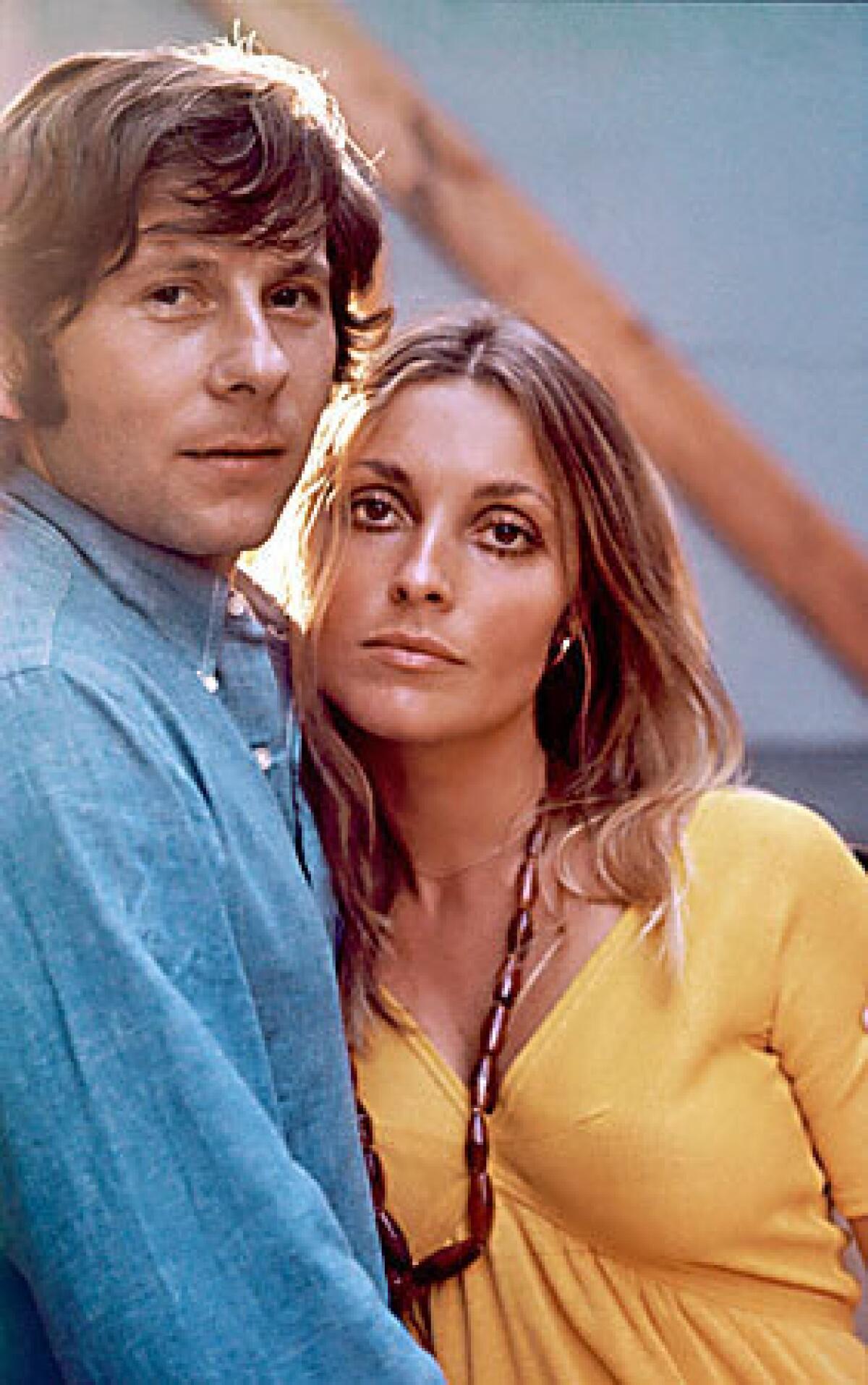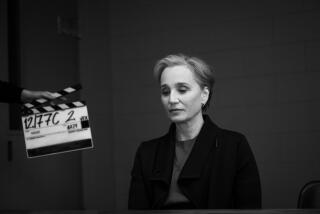How Sharon Tate transfixed Hollywood, 50 years before ‘Once Upon a Time ... in Hollywood’
In death, Sharon Tate was born into myth, an “it” girl with a canyon house, a famous director husband, and a beauty Hollywood craved as its mirror in an age of acid trips and biker gangs, a time when America was unmoored and the studio system was giving way to brash, young independent filmmakers.
Tate lived at a moment when the counterculture barged in on the martini set and tore up the rules. She was that flicker between eras, wholesome daughter, libertine wife. Her murder in 1969 came as if a horror show had hijacked a pot-scented parade. Hollywood ran scared and Tate, who was eight months pregnant when she was stabbed 16 times by followers of Charles Manson, became a patron saint to the inexpressible.
She was 26. Her role as a suicidal soft-porn actress in the “Valley of the Dolls”, a tale of barbiturates and reckonings, did not win the reviews that crystallize a career. But her end, as with those of James Dean and Bobby Kennedy, was tragically American, a promise forsaken, a dream denied. She became inextricably linked to the crime that took her, and what’s left is a stunning, ageless face, an alluring portrait upon which to hang our what-ifs and insatiable fascinations.
Tate flashes as if a recurring candlelight in Quentin Tarantino’s new “Once Upon a Time ... in Hollywood.” Played with trippy guilelessness by Margot Robbie, Tate, married to real-life Polish director Roman Polanski, shines in snippets through a gritty, nostalgic, musical joyride into 1960s Hollywood and the lives of washed-up fictional TV star Rick Dalton (Leonardo DiCaprio) and his stuntman confessor Cliff Booth (Brad Pitt).
The film is as much homage to Tate as it is to an era of halter tops, draft dodgers, Joe Namath and “Easy Rider.” She dances at the Playboy Mansion and races in a convertible with Polanski, whose “Rosemary’s Baby” had made him a heralded auteur. In mini-skirt and white go-go boots, Tate slips into a movie theater to watch her part as a secret agent in “The Wrecking Crew.” The scene reveals unadorned wonder that she, a Catholic-raised army officer’s daughter, is on the marquee with Dean Martin and Elke Sommer.
Robbie has few lines, but her resonance carries a lasting, eerie enchantment. She embodies an actress who personified a time at the instant that time changed. “I always look at the character and what the character is supposed to serve to the story,” said Robbie when the film premiered at Cannes. “The moment I got on screen gave an opportunity to honor Sharon. . . I think the tragedy ultimately was the loss of innocence. To really show those wonderful sides of her, I think, could be adequately done without speaking.”
Tate’s sister, Debra, could not be reached for comment. She had misgivings about the film, but reportedly after receiving a script from Tarantino, regarded the director’s rendition as respectful to Sharon’s memory. Hollywood is much altered since the days of Sharon Tate when women were often cast more as types than talents. Sex abuse cases, including those against Harvey Weinstein, Tarantino’s former longtime producer, have raised awareness and given women more inroads in the industry on and off set.
Tate’s magic was that she was a fleeting ingénue, her face everywhere, as if on a pinwheel spinning through pop culture. Her brand could be recycled and reinvented. The 50th anniversary of her death brought the April release of the widely panned “The Haunting of Sharon Tate” starring Hilary Duff and the upcoming novel “Set the Controls for the Heart of Sharon Tate” by Gary Lippman. Her wedding dress was auctioned last year for $56,250.
A sex symbol — she appeared in a Playboy spread shot by Polanski — Tate also wore scarves, went barefoot and read Thomas Hardy’s “Tess of the d’Urbervilles,” which a decade later Polanski would adapt for a movie. Their house on Cielo Drive in Benedict Canyon echoed with the parties of a new Hollywood, a set of filmmakers, artists, musicians and narcotic-induced wanderers changing the city, the country and the culture.
It wasn’t all glamour and discovered privilege. The real-life Tate had her problems. Polanski, whom Tate had first met at a party in London, was domineering and often on the road with a film, frequenting clubs and, according to a number of accounts, orchestrating trysts. Nine years after Tate’s death, he would flee the U.S. after being arrested on sex abuse charges against a minor, never to return.
In his 2015 biography, “Sharon Tate: A Life,” Ed Sanders writes of a woman conflicted over wanting to be either an American version of Catherine Deneuve or a stay-at-home-mom. Feminism was chipping at tradition and women such as Tate were balancing personal desires and family expectations. Tate seemed to enjoy celebrity more than the rigors of serious acting and Polanski, a man of moods and ruffle collars who cast her in “The Fearless Vampire Killers” (1967), was consumed with his own scripts and obsessions.
“Roman was the star in that relationship and Sharon was the beautiful actress wife. You didn’t walk into a room and think this is Meryl Streep,” said Toni Basil, choreographer on Tarantino’s film, who knew Polanski and Tate and once dined with them in France. “Sharon was dear, sweet and aware of her sexuality but not competitive with other women.”
Born in Dallas two years before the end of World War II, Tate was an army brat, living in Texas, Washington state and Italy before moving to Los Angeles. A homecoming dance queen and cheerleader, she had an uncredited role in “Barabbas” (1961), a biblical epic starring Anthony Quinn. Tate went onto appear in popular TV shows, including “Mister Ed” and “The Beverly Hillbillies.” She starred alongside Patty Duke and Barbara Parkins in “Valley of the Dolls.” Based on the novel by Jacqueline Susann, “Valley” cast Tate as a beautiful, doomed showgirl.
The movie was released the same year as three films that epitomized Hollywood’s fresh sense of social realism: “The Graduate” “Bonnie and Clyde” and “In the Heat of the Night.” “Valley” was, by comparison, melodrama. The New York Times called it “an unbelievably hackneyed and mawkish mish-mash of backstage plots and ‘Peyton Place’ adumbrations in which five women are involved with their assorted egotistical aspirations, love affairs and Seconal pills.”
Tate told Look magazine in 1967 that when people look at her “all they see is a sexy thing. ... People are very critical on me. It makes me tense. Even when I lay down, I’m tense. I’ve got an enormous imagination. I imagine all kinds of things. Like that I’m all washed up, I’m finished. I think sometimes that people don’t want me around. I don’t like being alone, though. When I’m alone, my imagination gets all creepy.”
Such insecurities were not recognizable from the outside. Sue Cameron, a former columnist for the Hollywood Reporter and author of “Hollywood Secrets and Scandals,” said the last time she saw Tate was at a ‘Stars on Roller Skates’ event at an old ballroom on the Santa Monica pier.
“It was the middle of summer and Sharon wore a full length mink coat,” said Cameron. “I’ll never forget that. She was into the celebrity stuff. She was beautiful. It was real. When you looked into her face she had these luminous eyes that looked right at you. Maybe Polanski would have urged her to take a deeper look at herself as an actress, but I think she was just one of the pretty girls cast in movies. She was at a crossroads at what she was going to do.”
Less than a month after man first walked on the moon, in a year when the Beatles gave their final performance and Jimi Hendrix played “The Star-Spangled Banner” at Woodstock, in a time of tie-dye, flower children and sexual revolution, a man nicknamed “Tex” and Manson “family” members Susan Atkins and Patricia Krenwinkel walked up to 10050 Cielo Drive and slaughtered Tate and four others, including her hairdresser and former lover Jay Sebring.

Manson, who died in a Bakersfield hospital in 2017 while serving a life sentence, had ordered the killings to ignite a race war, using the phrase “Helter Skelter,” the title of a Beatles song, and a reference to his apocalyptic vision of Scripture. Tate was left lying beside a sofa, a rope looped around her neck. The killers wrote PIG with her blood on the front door. Polanski was in Europe. When Los Angeles woke up, a fantasy had ended and the world was not the same as before.
“Once Upon a Time ... in Hollywood” imagines a day in Tate’s life. She’s out and about, walking past the marquee for “The Wrecking Crew,” which brought good reviews for her comedic gifts. Her hair is long, her sunglasses big. She is upbeat and free on a cloudless day. She goes into a bookstore and buys a copy of “Tess of the d’Urbervilles.” She’s excited to give it to Polanski. She wants to teach him something new.
More to Read
Only good movies
Get the Indie Focus newsletter, Mark Olsen's weekly guide to the world of cinema.
You may occasionally receive promotional content from the Los Angeles Times.











